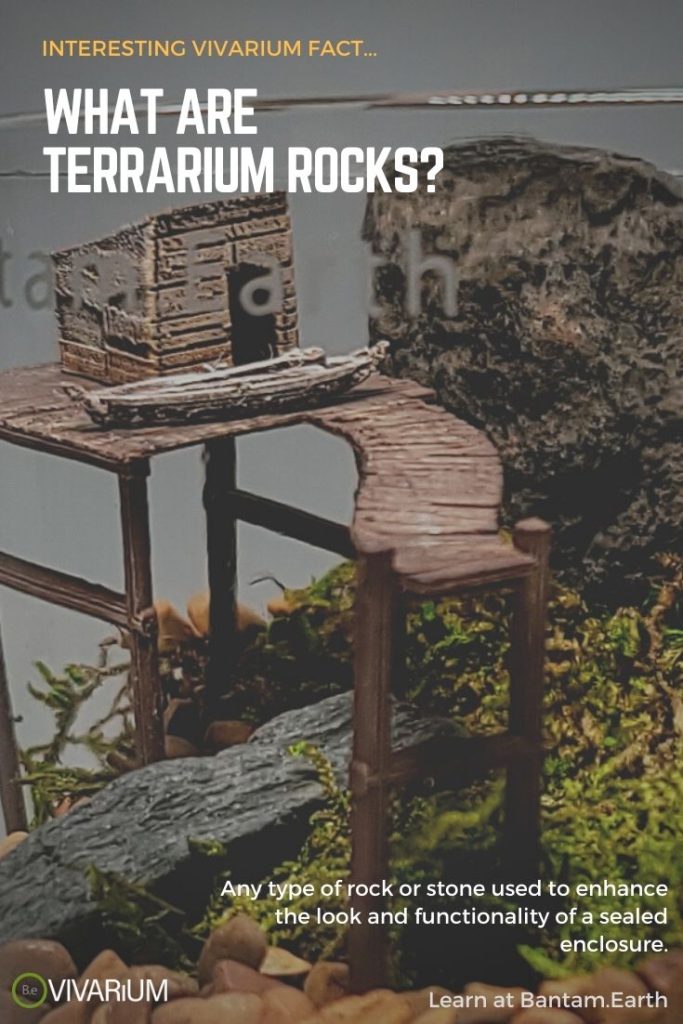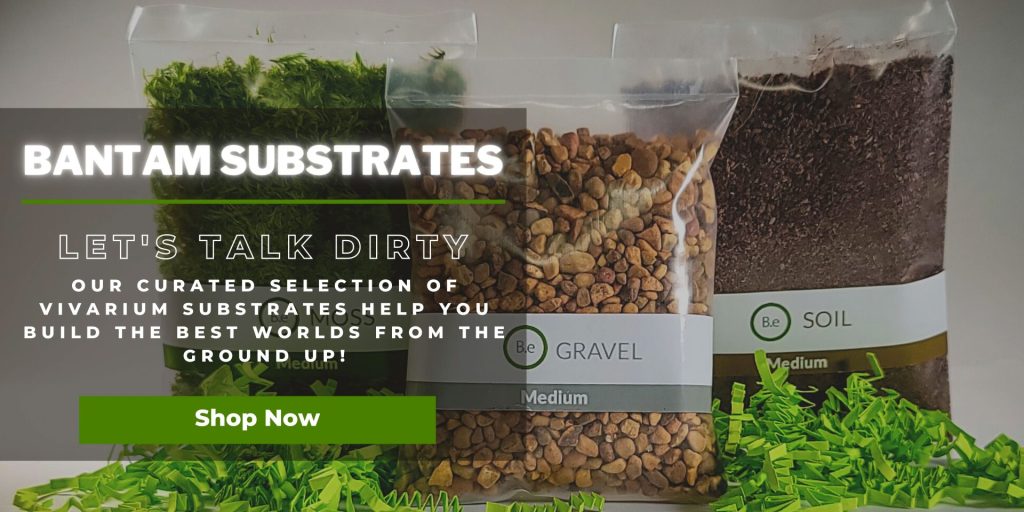If you’re looking to add a unique flair to your terrarium, terrarium rocks should be an essential part of that process. Rocks add texture, depth, and character to terrariums, creating an inviting atmosphere that’s both attractive and fun.
Not only do they provide visual interest and a pleasant contrast to your terrarium’s base and soil, but they also absorb heat and help regulate humidity levels. Whether you prefer natural or artificial rocks, finding the perfect combination for your terrarium isn’t as daunting as you might think.
In this article, we’ll explain the benefits of using rocks in a terrarium, walk you through different types of rocks, and offer tips for arranging and caring for them. Plus, if you’re feeling creative, you’ll even learn how to make your own terrarium rocks!
Table Of Contents:
ToggleWhat Are Terrarium Rocks?
Terrarium rocks are any type of stone used to decorate a terrarium. Almost any type of rock could be considered appropriate for terrarium use, with the exception of stones that might negatively impact the tank’s ecosystem.
Terrarium-safe rocks can dramatically improve the aesthetics of the setup while they also have a variety of other advantages.


Best Types Of Rocks For A Terrarium
Rock formations in terrariums can provide an interesting texture that adds texture and dimension to a landscape, allowing you to create a diverse terrain and allowing you to display your plants and other decorations in new ways.
These kinds of rocks can also be used as a shelter and hiding place for your animals while providing stability and added environmental enrichment.
When it comes to choosing the right terrarium rocks, there are many options available. From natural rocks such as river stones and pebbles to manufactured types like ceramic and glass rocks, there is something for everyone.
Color is also important when choosing the right rocks for your terrarium, as you want to make sure the rocks you choose will blend in with the overall design and color scheme.
When considering the best types of rocks for a terrarium, there are a few factors I typically look for. Is it safe to use and will it provide a tangible benefit to the look and health of the mini-ecosystem? Generally, there are a few options one could consider when deciding on rocks. Here are my go-to picks:


Aquascaping Rocks For A Terrarium
Aquascaping rocks have become increasingly popular as a type of terrarium rock as they tend to have naturalistic appearances that bring a sense of the outdoors indoors. These rocks tend to be versatile and can be used to either cover the entire bottom of the terrarium or be used to create interesting landscaping features such as caves, tunnels, and coves.
The Pros
The benefits of using aquascaping rocks as terrarium rocks are numerous. They are porous and less likely to harbor bacteria than smoother, denser types of rocks. Aquascaping rocks will also promote natural bacterial growth as they hold moisture better than smoother rocks.
They also assist with the overall humidity levels inside the terrarium. Finally, aquascaping rocks can help keep your terrarium substrate from deteriorating, since their porous surface helps to keep the substrate from eroding away.
The Cons
On the other hand, there are some potential cons to using aquascaping rocks as terrarium rocks. The rough porous surface can make cleaning a bit more difficult.
Organic matter such as decaying leaves and moss can easily collect in the crevices of the rocks and become difficult to remove. Aquascaping rocks also tend to be slightly bulkier than some other types of terrarium stones, which can make arranging them properly more challenging.
Typical Care Requirements
Caring for aquascaping rocks is relatively easy and straightforward. An initial rinse and scrub before use is recommended, as these rocks tend to hold onto debris more than smoother rocks. It is important to watch for any excess calcium buildup.
Aquascaping rocks act like a sponge and can absorb calcium from the water and cause it to accumulate on the surface of the rocks. If this occurs, removing them from the terrarium and thoroughly cleaning and scrubbing them with a brush are recommended.
Fake Rocks For A Terrarium
Using artificial rocks in a terrarium can be a great way to create a unique and attractive display while adding some structure and texture to the terrarium layout. Fake rocks are low impact, easy to use, require minimal maintenance, and can be easily changed as your design desires.
With a wide variety of different shapes, sizes, and colors, we customize our terrarium rocks, aka Terrains, to fit the specific designs we have in mind. Many of our artificial rocks are also quite lightweight, which helps to reduce the overall weight of the terrarium.
The Pros
One of the potential cons of using fake rocks in your terrarium is that because they are not natural, they may not provide the same level of air and water circulation for your plants that natural terrarium rocks would.
Fake rocks are also not necessarily the best choice for supporting heavy plants, as they are not made to do so. For efficient air and water circulation, organic rocks will be the best choice.
The Cons
It is also important to remember that with fake rocks come specific cleaning and maintenance requirements. While natural rocks will require regular cleaning with a damp cloth, fake rocks shouldn’t be cleaned at all as the build-up of debris helps the rocks look more natural and organic.
Fake rocks should be inspected frequently for any signs of damage and replaced as needed to prevent any harm to the terrarium. With proper care, fake rocks can be a great addition to any terrarium.
DIY Terrarium Rocks
DIY rocks can be used to create unique terrariums with unlimited customizability. These rocks come in a variety of sizes and shapes that can provide strong visual elements, texture, and interest to any terrarium. When created properly, DIY rocks can help to bring a bit of nature indoors while staying within your budget.
The Pros
When opting to make your own terrarium rocks, the benefits should be thoroughly weighed. Making your own rocks can be a fun and creative process.
They open up possibilities for personalizing your terrariums as well as creating unique looks that are not achievable by just buying them. DIY rocks could also be a more cost-effective choice than purchasing pre-made rocks.
The Cons
On the other hand, there are some potential drawbacks to using DIY rocks. Some projects may take a lot of time to complete, such as when using concrete or foam.
This can require the use of special tools and materials that some may not be comfortable using. Additionally, poorly made DIY rocks may be prone to collapsing or degrading over time.
Recommended Techniques
When making your own terrarium rocks, it is important to keep safe techniques and materials in mind. Depending on what medium you use, you may need to wear gloves and a dust mask to protect yourself from any fumes or particles that may be released.
Be sure to use the proper bonding agents to assemble the rocks securely; for example, if you are using concrete, make sure to use an appropriate sealant afterward to keep your DIY rocks from leaching calcium or other potentially unwanted minerals around your plants and animals.
How To Work With Terrarium Rocks
When arranging rocks in your terrarium, it’s important to take your time and handle the rocks with care. Rocks can be heavy and awkward to move, so use both hands and make sure to support their weight as you move them from one location to another.
You should also avoid dropping rocks onto the terrarium substrate or other materials. Rocks have sharp edges and can easily cause damage to the terrarium surface.
Terrarium Rock Arrangement
When adding rocks to the terrarium, you should also be mindful of the size and number of rocks. Large pieces should always go first, creating the basic structure of your terrarium design.
Then, smaller stones can be used to fill in any empty spaces and help create a balanced look. Try to create different layers and textures with the rocks, while still leaving enough open space around your plants.
Furthermore, you should make sure to keep rocks away from heat sources, fan areas, and other equipment that can cause shifts and movement. Rocks act as an anchor to the terrarium and must remain fixed in place to maintain its stability.
When adding rocks to the terrarium, avoid piling rocks one on top of another, as this could cause instability.
Unusual Ways to Enhance The Terrarium
There are many unusual ways you can arrange your terrarium rocks in order to enhance the look and feel of your terrarium. For a natural, rustic design, you can use grass and live plants to frame cobblestone pathways or create different shapes or patterns.
If you have rocks of different sizes, examine their shapes and use them to build stone steps or fantasy-like terraces. You could also arrange thick clusters of rocks in cellular shapes that create a three-dimensional effect.
If you want to go a step further, consider adding ambient making to your stones. By using decorative stones with ornamental patterns… With inspiring words or images, shapes and patterns, and LED strips, you can create nearly any look.
From bright and colorful creations to subtle and tranquil scenes, you’re only limited by your imagination and creativity. With a unique arrangement of your hardscape, you can create a truly memorable and captivating design.
Conclusion
Terrarium rocks are an essential type of hardscape for creating a successful terrarium. They provide various benefits. This can be anything from providing safety for the plants and inhabitants of the terrarium… To add a unique aesthetic character. to the environment


Regardless if you opt for buying natural aquarium rocks or choose to make your own rocks… It’s important to have an understanding of the different materials and types of rocks available and the cleaning, handling, and arranging techniques. With knowledge, care, and creativity, you can enjoy a beautiful and long-lasting terrarium with rocks that are sure to leave the internet in awe.
Frequently Asked Questions
Yes, you can use aquarium rocks for terrariums. It is important to note, however, that some aquarium rocks may contain sharp edges or debris that can make them unsuitable for terrariums. It‘s best to use aquarium rocks specifically marketed for terrarium use to ensure your terrarium is safe for your plants, animals, and other inhabitants.
No, rocks do not grow mold. Mold is a type of fungus that requires an organic surface, such as wood, paper, or soil, to grow and is unable to form on a non–living material like a rock.
Great rocks for terrariums are generally porous and come in a variety of sizes, shapes, and colors. Some of the most popular rocks for terrariums are lava rocks, polished river rocks, and smooth tumbled stones.
Yes, you can put rocks in a terrarium! Rocks can provide a natural and aesthetically pleasing look to your terrarium, as well as additional oxygen and water drainage. Make sure that your rocks are washed and sterilized to prevent any organisms or fungi from contaminating the terrarium‘s environment.
Rocks act as a decorative addition to a terrarium, creating visual interest and grounding plants, or even adding a natural feel. Rocks also are great for supporting humidity and airflow, adding drainage, and helping to create microhabitats within the terrarium.




